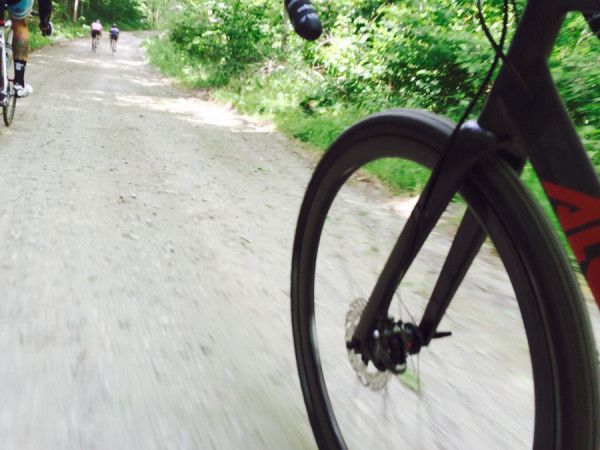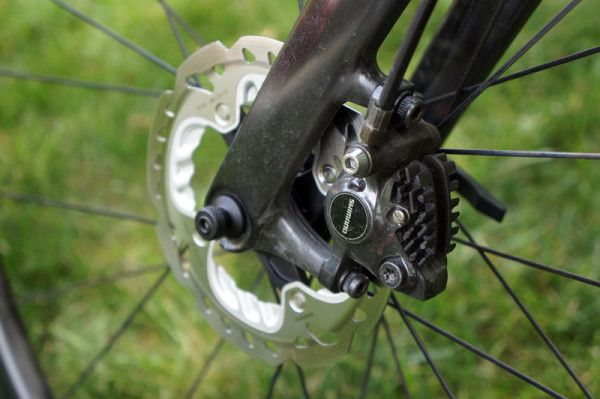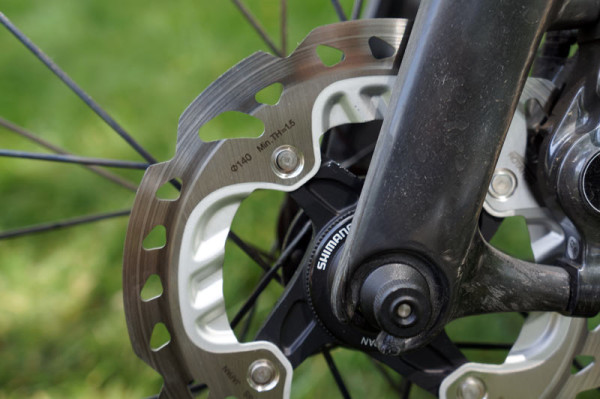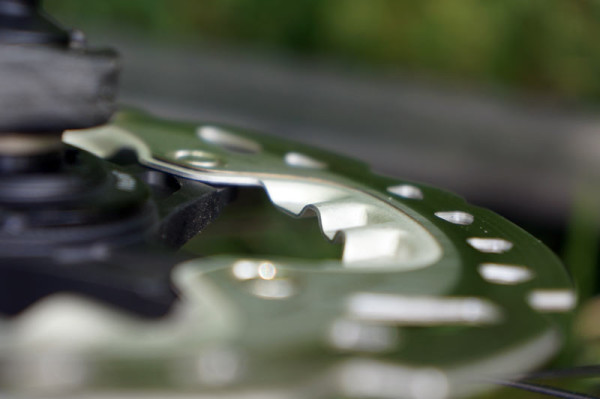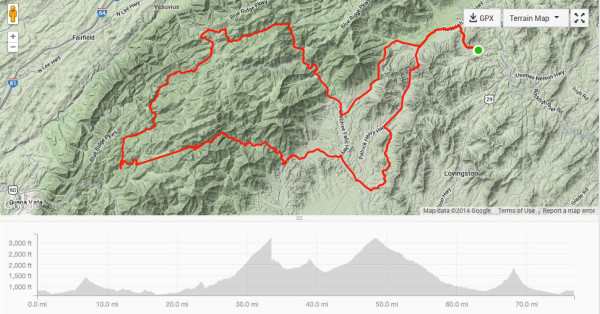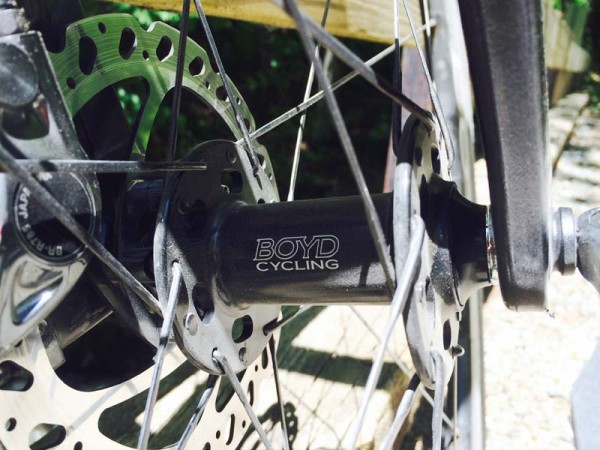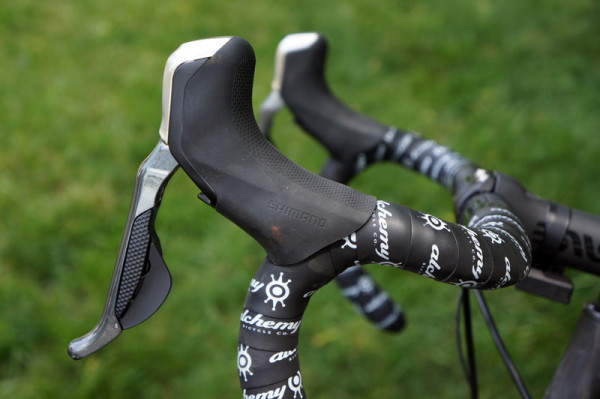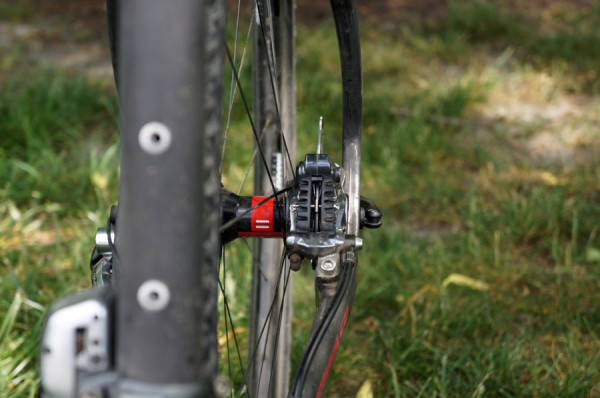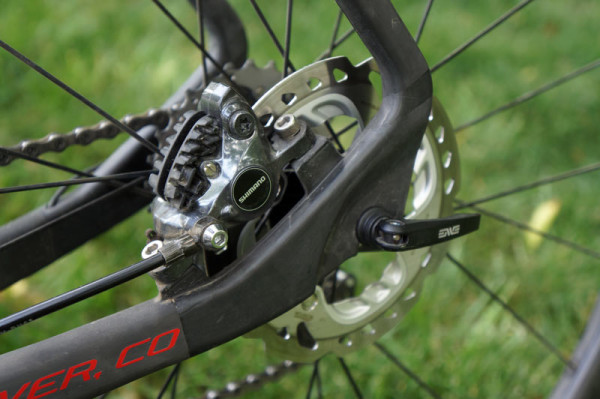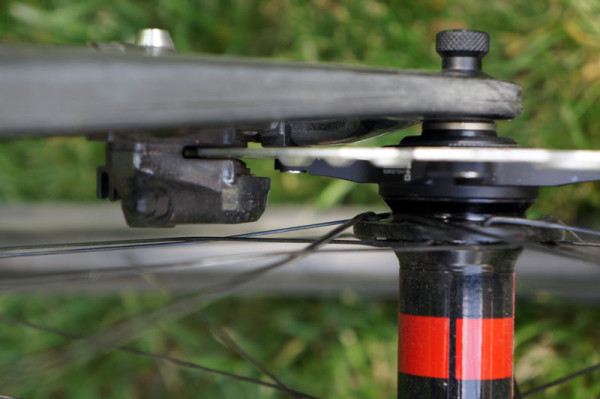After riding SRAM’s Hydro-R disc brakes at their launch and being very impressed (long before the recall), it was with quite a bit of anticipation that I hopped aboard a preproduction set of Shimano’s R785 hydraulic disc brakes at Interbike’s outdoor demo last year.
Unfortunately, that ride didn’t go as well as I’d hoped. Probably as well as Shimano had hoped. The set I rode had the dark cloud of “preproduction” and a bit of a rushed set up hanging over it. The power felt lacking, and left me with the impression that someone of my size (6’2″, 185lbs at the time) might be better served by 160mm rotors rather than the quaint 140’s they recommend for all users. Something seemed off, but given my overwhelmingly positive experience with their mountain bike brakes, I chalked it up to the set needing to be rebled, something to which the attending tech rep concurred. Thus, I left optimistic, looking forward to a second run.
That time came just a few weeks ago, and it proved to be a much better testing ground than the aqueducts of Nevada’s deserts…
My real test took place at the Baller’s Ride aboard the all-new Alchemy Aithon gravel road bike. The first day’s shakedown ride was a mere 30-ish miles of rolling hills and gave me the opportunity to feel them out, testing the limits of braking power before things locked up. I also dragged them for a bit to see how they tolerated heat.
So long as you’re combining their Freeza rotors with the Ice-Tech finned brake pads, Shimano recommends 140mm rotors for all rider sizes/weights. Despite my initial skepticism, they proved to be plenty powerful and held up to dragging on long descents. I didn’t totally abuse it, trying to alternate between front and rear, but I did maintain consistent application for long stretches in order to both test them and keep speed in check. On several long descents, I gave them a little extra squeeze after dragging just to see what they had left in them. I’d argue you really don’t have much control when you’re topping 40mph on skinny little tires, but these seemed to provide more stable deceleration than any rim brakes I’ve used. I’m happy to say I’m not writing this from a hospital.
All seemed right in the world, so why not push it?
For the actual Baller’s Ride, an 80 mile gravel-and-paved road grunt with more than 8,000 feet of climbing (and descending), I switched from the ENVE Smart Disc wheels installed on the bike to Boyd’s new Altamont Disc with thinner, lighter tires. (My computer turned itself off prior to one huge descent, which truncated the recorded mileage, hence the straight line drop/path on the lower left segment. I turned it back on at the bottom.)
The one concern was having to switch to 6-bolt rotors. I brought along Hayes’ rotors since they had the most surface area of any other rotors I had laying around. Presumably, that’d offer the most heat capture and dissipation compared to more minimal rotors. Fortunately, my theory seemed to work, and braking power was equally strong held up through consistent dragging and power braking.
Besides just testing the brake’s ability to handle heat, some of the gravel road descents carried on for miles and simply required brake dragging to maintain a safe speed. The Baller’s Ride presented some of the more treacherous real world conditions any road or ‘cross bike is going to see, and these brakes handled them flawlessly. At the end of the day, I had zero complaints…and that’s not even running Shimano’s own heat shedding rotors. That’s particularly important considering the Freeza rotors are ONLY offered in Centerlock. If you’re upgrading an existing bike or just really want a sweet set of wheels that are only offered with 6-bolt mounts, my experience suggests it’s not a problem to mix and match their calipers with a high quality, substantial rotor from someone else. I would strongly discourage trying to save weight at the rotors with a minimal, wide open design – you don’t want to repeat my mistakes. Of course, you do any such experimentation at your own risk.
Shimano’s hood ergonomics for the Di2-specific hydraulic braking levers are fantastic. They remained comfortable ride after ride, hour after hour. Lever feel is smooth as butter, which is what all hydraulics should feel like. Unlike the fast-then-slow ServoWave pad movement pattern on their MTB systems, the road brakes use a much more linear movement. Brake force comes on smoothly, not suddenly, and gives you plenty of power progression before lockup. There’s a ton of control here.
Even better, that full braking power and modulation is achievable with only one finger tip at the very top of the lever. The hand positions are shown above provided a secure grip and are how I rode all of the gravel descents. That’s huge when you’re screaming down a gravel road at 25+ mph and hit a washboarded corner that rattles your bones and you need that death grip to avoid full frontal road rash. So I’ll reiterate for emphasis – you have FULL BRAKING POWER with a mere fingertip positioned in the least leveraged part of the lever. And this feeling should never degrade due to cable housing contamination. If you’re a pure roadie that’s never used mountain bike hydraulic brakes, this will change your life. If you’re a switch hitter, you’ll understand…it feels just like you think it should. Which is amazing.
Once back home from Baller’s I went for a few more road rides on normal, rolling terrain and stop-and-go downtown sections. Still with the Hayes rotors, it was confidence inspiring and exactly what I want from braking. The slow pad retraction issue I experienced at Interbike was gone, likely because Matt at Alchemy had been riding this bike for a while and the piston seals were broken in.
Heck, they even have me rethinking 140mm rotors up front. With nothing but positive experiences with their mountain bike brakes, this is what I thought Shimano’s road offerings would be. This is what I wanted them to be. And, now, this is just plain what I want.
One note on mixing and matching: If you plan on going the other way, using Freeza rotors with non-Shimano calipers, ask your local shop to let you install a wheel with them before buying. Shimano’s two-piece rotor’s carrier is thick and extends far enough out to create clearance issues with some other calipers. I’ve tried them with Avid and Hayes brakes with the following adjustments to make them fit:
- Avid mechanicals’ brake pad tabs make contact, but can be filed down (particularly the inside one) to clear the carrier.
- Hayes CX-5 calipers barely touch, but small thin washers between the caliper and fork/adapter/frame will let it clear the carrier while still providing enough pad contact.
Again, any such modifications are made at your own risk, but wanted to share so you can check fitment before making the switch.
Unrelated, if you’re searching in vain for Shimano’s R785 brakes on their website, you’ll need to look under Ultegra > Di2 > Disc Brake Series. Check our original tech post on the R785 here and the new 105-level RS685 hydraulic braking with mechanical shifting here.
